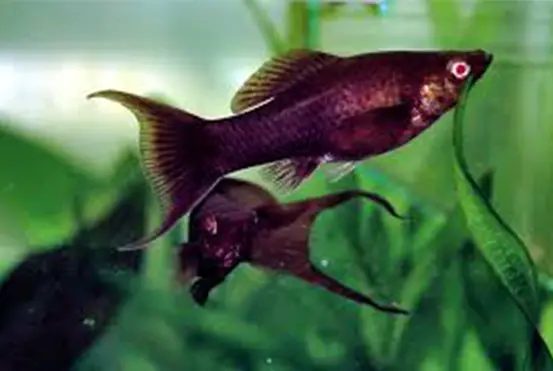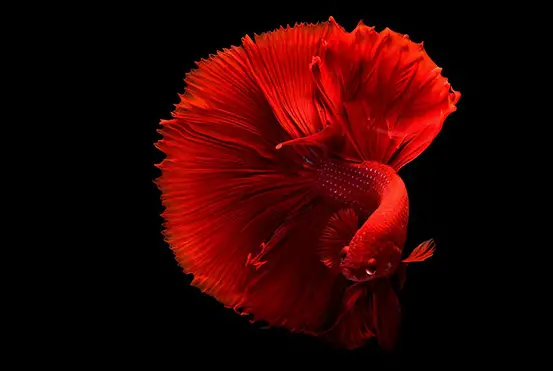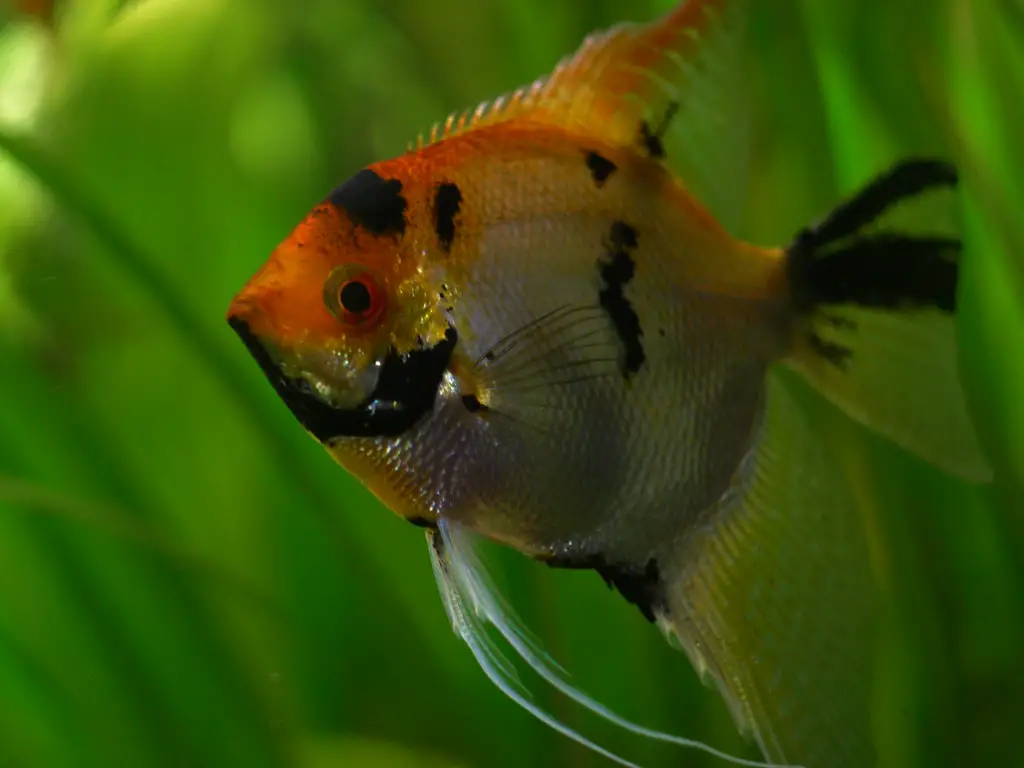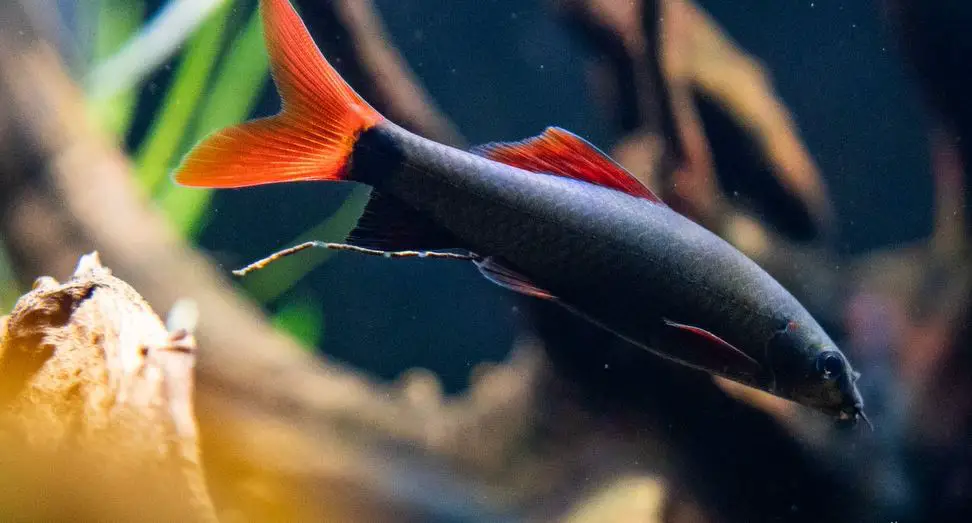As a beginner, you may wonder which type of fish to choose for your new aquarium. Live-bearing fish might be just what you need! They’re hardy, easy to care for, and fascinating to watch. In addition, their reproductive process makes them stand out from other fish species.
Quick Answer:
From watching the tiny fry grow into full-grown fish to potentially earning money by selling them, there’s no shortage of excitement when it comes to keeping live-bearing fish. Guppies, Platies, Mollies, Swordtails, Halfbeaks, Endler, Mosquito Fish, Four-eyed Fish (Anableps), Rainbow Fish, and Pseudomugil Rainbow Fish are some of the freshwater aquarium’s most popular live-bearing fish species.
This article will discuss the most common types of live-bearing fish, their ideal environment, feeding requirements, breeding tips, and many more. Whether you’re an experienced fishkeeper or just starting, this guide will provide all the information you need to care for your live-bearing fish successfully. So, let’s get started!
What Does Live-bearing Fish Mean?
Live-bearing fish are fascinating aquatic creatures that have a unique method of reproduction. Unlike most fish that lay eggs, livebearers give birth to live fry. This distinct characteristic sets them apart in the aquatic world and makes them popular among aquarium enthusiasts.
The term “livebearers” means that the eggs of these fish grow and hatch inside the female’s body, and the baby fish are born fully developed and ready to swim immediately.
In addition to the unique reproductive traits of livebearer fish, they can bring extra beauty to your underwater world. They exhibit cool colors and patterns, making them visually appealing and attractive in addition to any aquarium.
Furthermore, livebearer fish are tough and can handle different water conditions, which means beginners can make small mistakes without harming them. These features make livebearers an excellent choice for those who are just stepping into the world of aquariums.
Live-bearing Fish Origin
Livebearers are fascinating creatures that have been around for a very long time. One famous group of live-bearing fish is called the Poeciliidae family. You might recognize some of its members, like guppies, mollies, and swordtails, often kept as pets in aquariums.
Live-bearing fish originally come from the freshwater habitats of Central and South America. It is believed that live-bearing evolution in this family occurred approximately 40 to 50 million years ago.
The change from laying eggs to giving birth to young happened gradually over time. Scientists think that the ancestors of Poeciliidae were egg-laying fish, but due to certain environmental factors and survival pressures, they started giving birth instead.
One theory suggests that live-bearing evolved as a reproductive strategy to help the offspring survive in habitats where water conditions change, like temporary pools or streams that dry up sometimes .
The development of live-bearing in fish involved various changes in their bodies. For example, male live-bearing fish have a special type of fin called a “gonopodium,” which is a modified anal fin used for internal fertilization.
Conversely, females have a modified reproductive tract with structures similar to a “placenta” to sustain the growing embryos. These adaptations allow the embryos to get nutrients and oxygen directly from the mother, increasing their chances of survival.
Although the Poeciliidae family is the most well-known group of live-bearing fish, there are other families that also have live-bearing species. For instance, some types of halfbeaks (from the Hemiramphidae family), goodeids (from the Goodeidae family), and even certain species of sharks (like the lemon shark) give birth to live young ones.
Live-bearing Fish Appearance
live-bearing fish exhibit various body shapes, sizes, and color appearances. However, the live-bearing fish group has some common characteristics and variations. Here are some general aspects:
Body Shape
Live-bearing fish have different body shapes that match their habitat and swimming habits. Some have long and streamlined bodies, allowing them to zip through open water quickly. Think of fish like guppies and mollies—they have this sleek and slender look that helps them move swiftly.
On the flip side, we have fish-like swordtails that stand out with their elongated bodies. Their tails even resemble a sword, giving them a distinctive appearance. It’s like they have their very own weapon trailing behind them!
So, you see, live-bearing fish have a variety of body shapes, from those sleek and speedy swimmers to the ones with unique sword-like tails. It’s fascinating how their bodies perfectly adapt to their environment, making them stand out underwater!
Size
Live-bearing fish can be small or large, depending on their kind. For instance, we have these cute little guys called dwarf livebearers, like the Endler’s livebearers. They are tiny, usually around 2 to 3 centimeters long, less than an inch. So imagine that they’re really small!
We also have some bigger live-bearing fish, like mollies and swordtails. These guys can grow quite impressive. I’m talking about lengths of 10 to 15 centimeters (4 to 6 inches).
So, live-bearing fish come in different sizes. From these tiny little ones that can fit in the palm of your hand to the larger ones that can be several inches long. It’s fascinating how they can vary so much in size!
Color
Live-bearing fish are known for their vibrant and diverse colors. These colors serve multiple purposes, including species recognition, courtship displays, and camouflage. Their color patterns can range from solid hues to intricate designs, showcasing a beautiful combination of reds, oranges, blues, greens, yellows, and blacks.
Each species has its unique coloration; even within the same species, individuals can exhibit variations in colors and patterns. Live-bearing fish are like living masterpieces, using their colors to communicate, attract mates, and blend into their environment.
The stunning colors of live-bearing fish make them a sight to behold. They showcase a dazzling array of hues that serve important functions in their lives. Whether it’s to identify their kind, impress potential partners, or stay hidden from predators, these fish use their vibrant colors to navigate their world.
Each fish has its signature style, making them unique and captivating creatures in the underwater realm. So, next time you come across live-bearing fish, take a moment to appreciate the natural artistry displayed in their colors.
Livebearer Fish Diet
A proper diet is the cornerstone of good health and longevity for Livebearer fish. These omnivorous creatures thrive when provided with a balanced and varied menu. To help you ensure the well-being of your Livebearer fish, here are some recommendations for feeding livebearer fish:
1. High-Quality Flake Or Pellet Food
Livebearers can be fed high-quality flake or pellet foods specifically made for tropical fish. Look for brands that provide a balanced diet containing protein, vitamins, and minerals.
2. Live Or Frozen Foods
Livebearer fish benefit from occasional feedings of live or frozen foods. Popular options include brine shrimp, daphnia, bloodworms, and mosquito larvae. These foods are rich in protein and closely resemble their natural diet.
3. Vegetable
Livebearers also need vegetable matter in their diet. You can offer them blanched spinach, lettuce, zucchini, or peas. Make sure to chop or grate these vegetables for easy consumption finely.
4. Algae And Plant-Based Foods
Some livebearer fish, like mollies and platies, enjoy eating algae and plant matter. Therefore, providing them with algae-based foods or plant-based supplements like spirulina flakes or algae wafers is beneficial.
5. Occasional Treats
For dietary variety, you can occasionally give them treats like freeze-dried or frozen foods such as brine shrimp, tubifex worms, or krill. Remember to offer these treats in moderation as supplements to their regular diet.
Live-bearing Fish Availability
Live-bearing fish, such as guppies, mollies, swordtails, and other species, are generally readily available in the aquarium trade. These fish are popular among hobbyists due to their vibrant colors, interesting behaviors, and ease of care. You can find live-bearing fish for sale in pet stores, online aquarium retailers, and hobbyist breeders.
Pet Stores
Do you know local pet stores are treasure troves for live-bearing fish enthusiasts? They usually have many popular live-bearing fish like guppies, mollies, and swordtails.
What’s even more exciting is that you can find common and exotic color variations of these fish.
If you’re searching for a specific color or a unique variety of fish, exploring multiple pet stores in your area is a wonderful idea.
The availability of what you’re looking for can vary from store to store, so visiting different establishments increases your chances of finding exactly what you desire. In addition, each store may offer a distinct selection, making the exploration more exciting.
Online Retailers
You’ll be thrilled to know that there are plenty of online aquarium retailers where you can find and purchase live-bearing fish! These retailers offer a vast array of species and color variations, and the best part is that they can even ship the fish right to your doorstep.
Research beforehand, check out the retailer’s reputation and carefully review their shipping and handling policies to ensure a smooth and satisfactory purchase experience. Happy online fish shopping!
Hobbyist Breeders
Guess what? There’s a fantastic community of aquarium hobbyists passionate about breeding and selling live-bearing fish! These hobbyist breeders are dedicated and often specialize in specific species or color variations, offering an even wider variety than you typically find in pet stores.
To connect with these enthusiastic breeders, you can explore online forums and social media groups or get involved with local aquarium clubs. But the availability can vary depending on where you’re located and the particular species or color morph you’re interested in.
If you’re searching for something unique or rare, it requires more searching or tapping into your connections within the aquarium community.
Live-bearing Fish Price
Common livebearers like guppies, mollies, and swordtails can be quite affordable, typically ranging from a few dollars to around $10 per fish in pet stores. These colorful and lively fish are perfect for beginners or those on a budget.
If you’re after something unique or rare, be prepared to spend more. Exotic livebearers, like rare color variations of guppies or swordtails, can range from $10 to $50 or more per fish, depending on their scarcity and special qualities. Imagine having a fish with striking and distinctive colors!
But wait, there’s more! Show-quality live-bearing fish take it to another level. These fish are meticulously bred by experienced hobbyists and showcase exceptional traits.
Let’s say you’re interested in a show-quality molly or guppy with vibrant colors and exquisite patterns. These exquisite fish can range from $20 to several hundred dollars per fish, especially when destined for competitions or exhibitions.
Remember, prices for live-bearing fish can vary depending on your location, the species you’re interested in, and where you choose to purchase them.
While local pet stores generally offer more affordable prices, specialty breeders or online retailers might have a wider selection and higher-end options.
Always prioritize the health and well-being of the fish when making your choice, as quality matters more than the price tag.
Male Vs. Female Livebearers
Male and female livebearer fish have noticeable differences in their appearance and behavior.
The males are usually smaller and have brighter colors than the females. For example, in the live-bearing fish group, the male livebearer fish have long, colorful tails and bright bodies, while the females are bigger and have less color except for their tails.
You can also tell the difference between male and female livebearers by looking at their anal fins. The males have a thin, rod-like anal fin, while the females have a fan-shaped anal fin. This is one way to know if a fish is male or female.
Moreover, females have a gravid spot, a dark spot near the vent where eggs are visible, while males do not have this feature.
Tank Size For Livebearer Fish
When choosing the right tank size for your livebearer fish, it’s vital to consider their specific needs.
Let’s take a look at some examples. For small to medium-sized livebearers like guppies, a minimum tank size of 10 gallons is recommended. This will provide enough space for a small group of guppies to swim around comfortably.
If you plan on keeping larger livebearer species or a larger number of fish, opting for a larger tank is best. A minimum tank size of 20 gallons would be more appropriate for species like swordtails, platies, and mollies. This size gives them ample swimming space and accommodates their larger size.
However, it’s crucial to note that there can be variations within each species, such as larger sailfin mollies or specific swordtail varieties. In such cases, providing a tank size of at least 30 gallons or larger would be more suitable.
Types Of Live-Bearing Fish
Here are some of the most common live-bearing fish, their characteristics, and what makes them a beloved species among fish keepers. They are as follows:
1. Guppies
Guppies, often called “million fish” due to their prolific breeding, are highly popular in the aquarium hobby. They are prized for their vibrant and diverse colorations, ranging from striking oranges and yellows to rich blues and greens. Guppies are an excellent choice for both novice and experienced fishkeepers as they are relatively easy to care for.
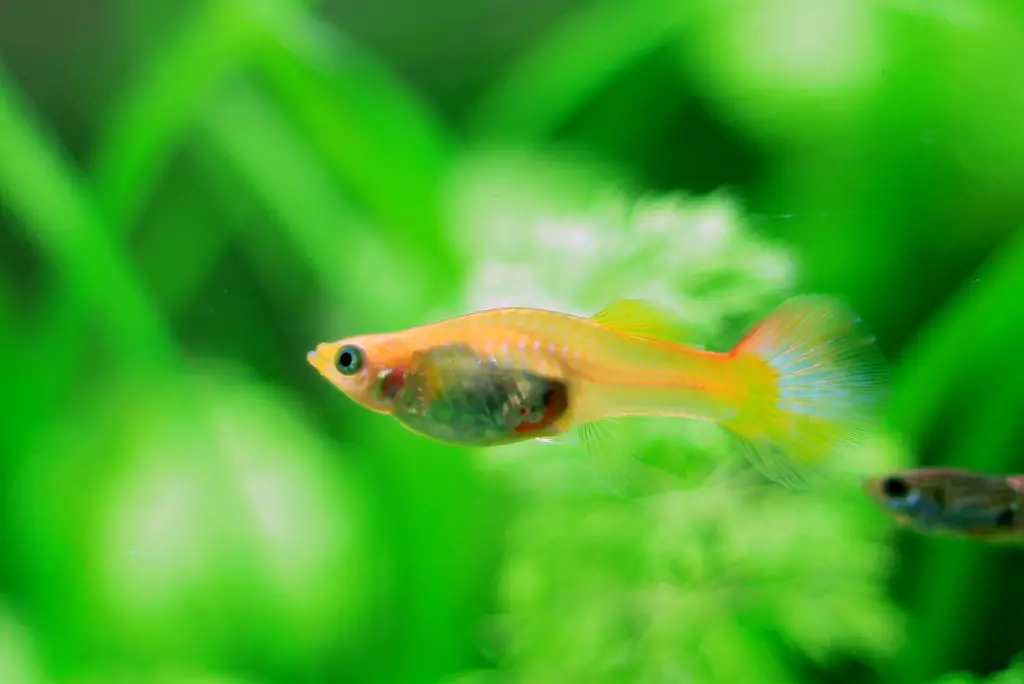
| Characteristic | Information |
| Scientific Name | Poecilia reticulata |
| Origin | South America, but widely bred |
| Temperament | Peaceful and sociable |
| Size | Up to 2 inches (5 cm) in length |
| Temperature | 72-82°F (22-28°C) |
| pH | 6.8 – 7.8 |
| Diet | Omnivorous – flake, pellets, live or frozen foods |
| Price | Affordable and widely available |
2. Platies
Platies are known for their peaceful and friendly nature, making them an ideal addition to any aquarium community. With a vibrant array of colors, ranging from striking oranges and yellows to serene blues and greens, Platies bring a beautiful palette to your tank. These low-maintenance fish are perfect for those looking to add a splash of color to their aquarium with minimal effort.
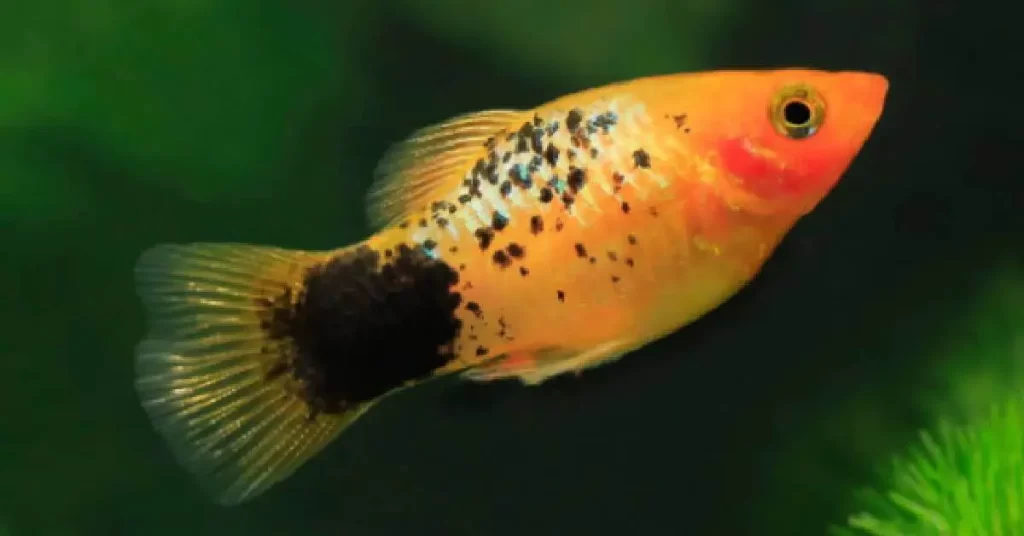
| Characteristic | Information |
| Scientific Name | Xiphophorus maculatus |
| Origin | Central America |
| Temperament | Peaceful and sociable |
| Size | Up to 2.5 inches (6.4 cm) in length |
| Temperature | 72-78°F (22-26°C) |
| pH | 7.0 – 8.0 |
| Diet | Omnivorous – flake, pellets, live or frozen foods |
3. Swordtails
Swordtails are a well-known live-bearing fish distinguished by their striking sword-like tails, a feature that adds a touch of elegance to any aquarium. These fish are visually captivating and easy to care for, making them an excellent choice for beginners and experienced fish keepers. Swordtails are compatible with a variety of fish species, making them perfect for community tanks.
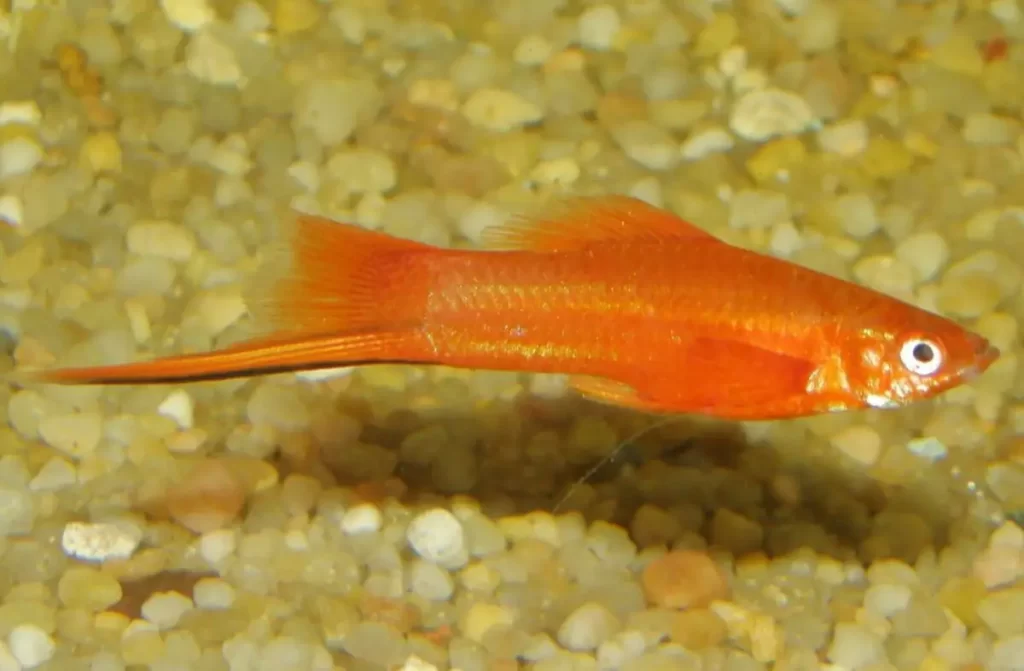
| Characteristic | Information |
| Scientific Name | Xiphophorus hellerii |
| Origin | Central America |
| Temperament | Peaceful and compatible with various species |
| Size | Up to 4 inches (10 cm) in length |
| Temperature | 72-78°F (22-26°C) |
| pH | 7.0 – 8.4 |
| Diet | Omnivorous – flake, pellets, live or frozen foods |
4. Mollies
Mollies stand out as larger and more robust live-bearing fish, adding a touch of charisma to your aquarium. One of their unique attributes is their adaptability to both freshwater and saltwater environments, making them a versatile choice for various types of aquariums. Mollies are available in a wide spectrum of colors and are well-suited for aquarium enthusiasts due to their ease of care.

| Characteristic | Information |
| Scientific Name | Poecilia spp. (various species) |
| Origin | Central and South America, Mexico |
| Temperament | Peaceful and adaptable to water types |
| Size | Up to 4 inches (10 cm) in length |
| Temperature | 75-81°F (24-27°C) |
| pH | 7.0 – 8.5 |
| Diet | Omnivorous – flake, pellets, live or frozen foods |
5. Halfbeaks
Halfbeaks are intriguing and distinctive live-bearing fish characterized by their elongated lower jaw and quirky appearance. Their playful and active personalities set them apart from other Livebearer fish species. Halfbeaks prefer to swim near the water’s surface, adding an extra layer of charm to your aquarium.
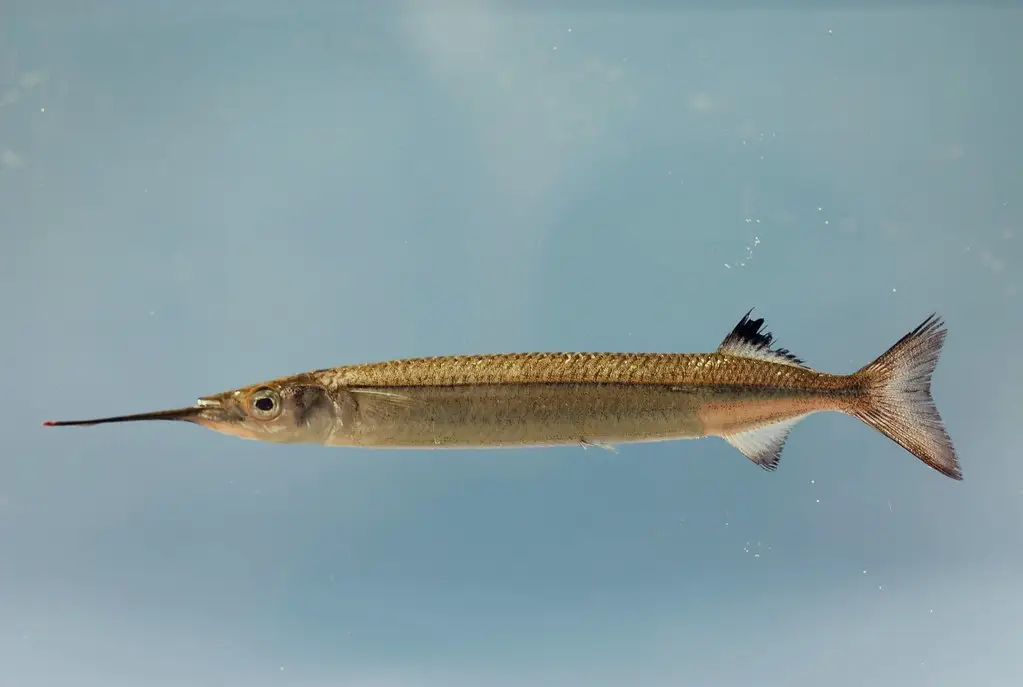
| Characteristic | Information |
| Scientific Name | Zenarchopterus spp. (various species) |
| Origin | Southeast Asia, Oceania, and the Indian subcontinent |
| Temperament | Active and playful |
| Size | Up to 4 inches (10 cm) in length |
| Temperature | 75-82°F (24-28°C) |
| pH | 7.0 – 8.0 |
| Diet | Carnivorous – live or frozen foods |
6. Endler
Endlers are an excellent choice for those with limited space who still want to enjoy the world of live-bearing fish. These tiny fish are closely related to guppies but have their unique charm and characteristics. Endlers are active swimmers and are available in a variety of vibrant colors that can bring a captivating glow to your aquarium.
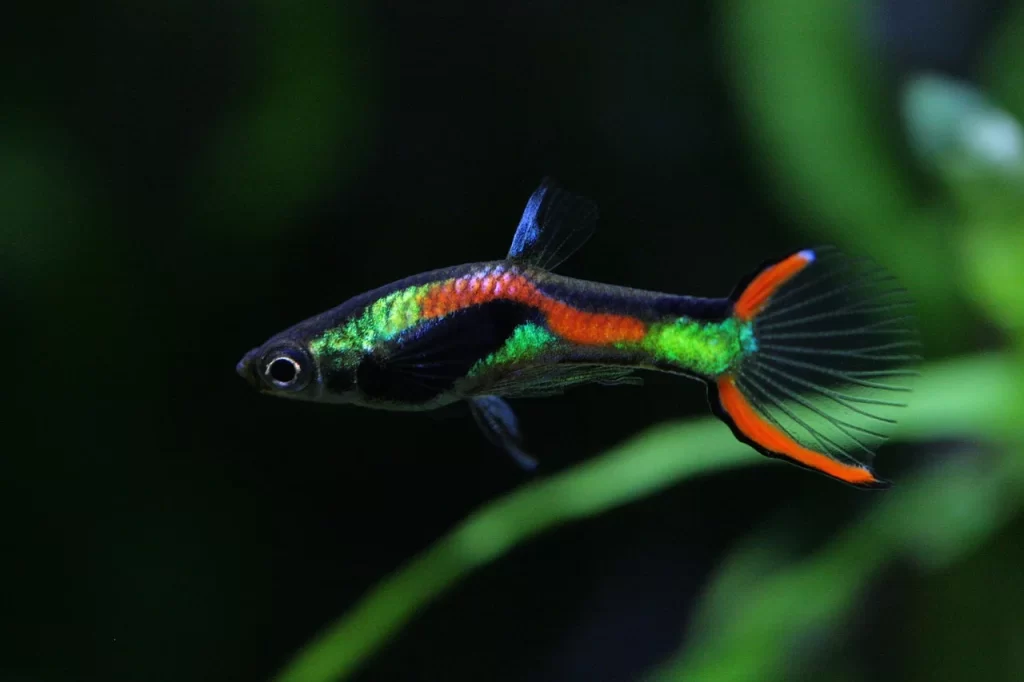
| Characteristic | Information |
| Scientific Name | Poecilia wingei |
| Origin | Venezuela |
| Temperament | Peaceful and active |
| Size | Up to 1.5 inches (3.8 cm) in length |
| Temperature | 75-82°F (24-28°C) |
| pH | 6.5 – 8.0 |
| Diet | Omnivorous – flake, pellets, live or frozen foods |
7. Mosquito Fish
Mosquito fish are notable for their practicality as live-bearing fish. They are hardy, adaptable, and have a remarkable talent for consuming mosquito larvae, making them particularly valuable for outdoor ponds or water features. While they may not exhibit the vibrant colors of other livebearers, their unique abilities and behavior still make them an intriguing addition to your indoor aquarium.
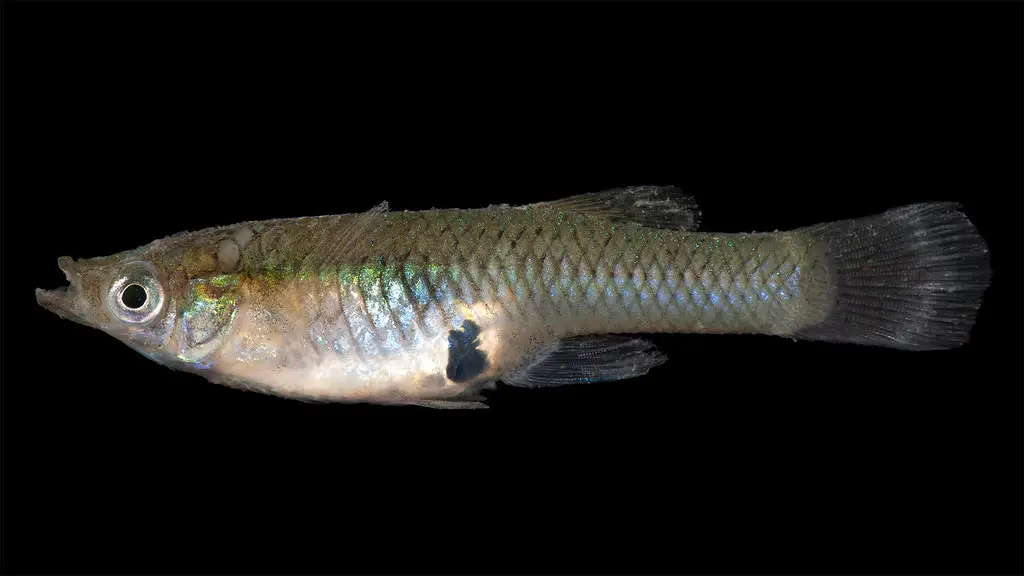
| Characteristic | Information |
| Scientific Name | Gambusia spp. (various species) |
| Origin | North and Central America |
| Temperament | Hardy, adaptable, and practical |
| Size | Up to 2.5 inches (6.4 cm) in length |
| Temperature | 65-80°F (18-27°C) |
| pH | 7.0 – 8.5 |
| Diet | Larvivorous – primarily mosquito larvae |
8. Four-eyed Fish (Anableps)
The four-eyed fish, also known as Anableps, is a highly intriguing live-bearing fish known for its remarkable adaptation. Their eyes are split horizontally, allowing them to see both above and below the water’s surface simultaneously. While these fish are relatively rare in the aquarium hobby, they make a unique and captivating addition to outdoor ponds or larger indoor aquariums.
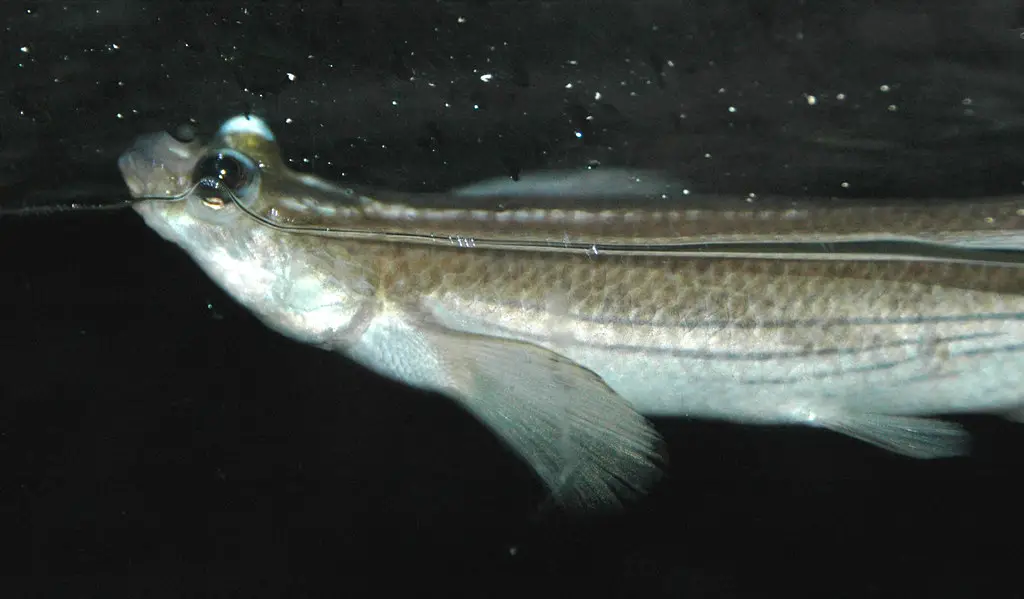
| Characteristic | Information |
| Scientific Name | Anableps spp. (various species) |
| Origin | Central and South America |
| Temperament | Peaceful and intriguing |
| Size | Up to 12 inches (30 cm) in length |
| Temperature | 75-82°F (24-28°C) |
| pH | 7.0 – 8.0 |
| Diet | Omnivorous – flake, pellets, live or frozen foods |
9. Rainbow Fish
Rainbow fish are a delightful and energetic type of live-bearing fish known for their vibrant colors and lively personalities. Their iridescent scales can bring a captivating array of hues to any aquarium. These fish are relatively easy to care for and are excellent candidates for community tanks, where they can peacefully coexist with other friendly fish.
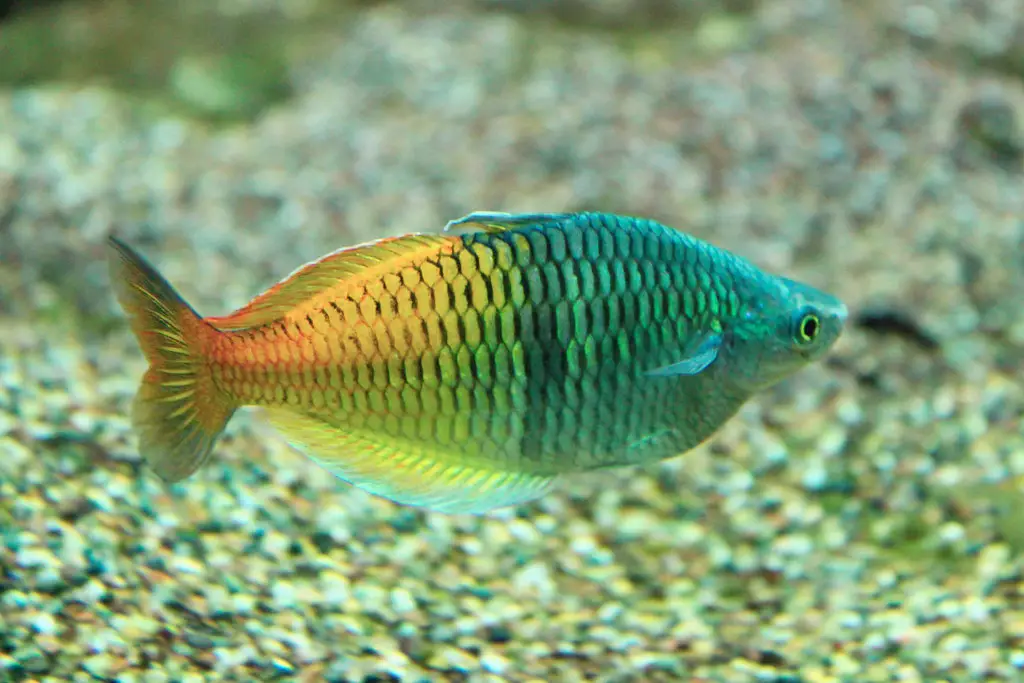
| Characteristic | Information |
| Scientific Name | Melanotaenia spp. (various species) |
| Origin | Australia, New Guinea, and nearby regions |
| Temperament | Peaceful and social |
| Size | Varies by species, typically 2-4 inches (5-10 cm) |
| Temperature | 73-79°F (23-26°C) |
| pH | 6.5 – 7.5 |
| Diet | Omnivorous – flake, pellets, live or frozen foods |
10. Pseudomugil Rainbow Fish
Pseudomugil Rainbow Fish are recognized for their serene disposition, making them ideal candidates for community tanks alongside other non-aggressive fish species. Their striking shimmering blue eyes perfectly complement their silver or gold-colored bodies, adding an elegant touch to your aquarium. These diminutive fish typically reach a size of 1-2 inches, making them an excellent choice for smaller aquariums.
| Characteristic | Information |
| Scientific Name | Pseudomugil spp. (various species) |
| Origin | Australia, New Guinea, and nearby regions |
| Temperament | Peaceful and suitable for community tanks |
| Size | Typically 1-2 inches (2.5-5 cm) in length |
| Temperature | 73-79°F (23-26°C) |
| pH | 6.5 – 7.5 |
| Diet | Omnivorous – flake, pellets, live or frozen foods |
| Price | Affordable and available in the aquarium trade |
Maintain Water Quality For Livebearer Fish
To maintain water quality for livebearer fish, there are a few factors to consider, such as water temperature, the type of aquarium filter to use, and the water hardness and pH levels. Here’s some information to help you with these aspects:
1. Water Temperature
Livebearer fish are typically tropical and require a specific temperature range for optimal health. Therefore, keeping the water temperature in the aquarium within the appropriate range for your specific species of livebearers is essential.
Generally, a temperature between 75°F and 82°F (24°C to 28°C) is suitable for most livebearer species.
2. Aquarium Filter
Choosing the right filter for your livebearer fish tank is important. Since livebearers give direct birth to their babies, it’s recommended to avoid using high-current filters that may harm the fry.
Instead, consider using gentle filters like air-driven box filers, under gravel filters, or sponge filters. These filters provide adequate water circulation without harming the baby fish.
3. Water Hardness And pH
Livebearer fish are adaptable to a range of water hardness and pH levels. However, it’s essential to maintain stable water conditions within acceptable parameters.
Most livebearers prefer slightly hard water with a pH range between 7.0 and 8.0.
Regular water testing and adjustments can ensure the water hardness and pH remain suitable for your livebearer fish.
Best Tank Mates for Live-bearing Fish
Livebearer fish are known for being peaceful and friendly, making them excellent choices for community aquariums. In addition, they get along well with various other fish, which can make for a diverse and interesting tank.
If you’re looking for some good tank mates for your live-bearing fish, here are a few options to consider:
1. Corydoras Catfish
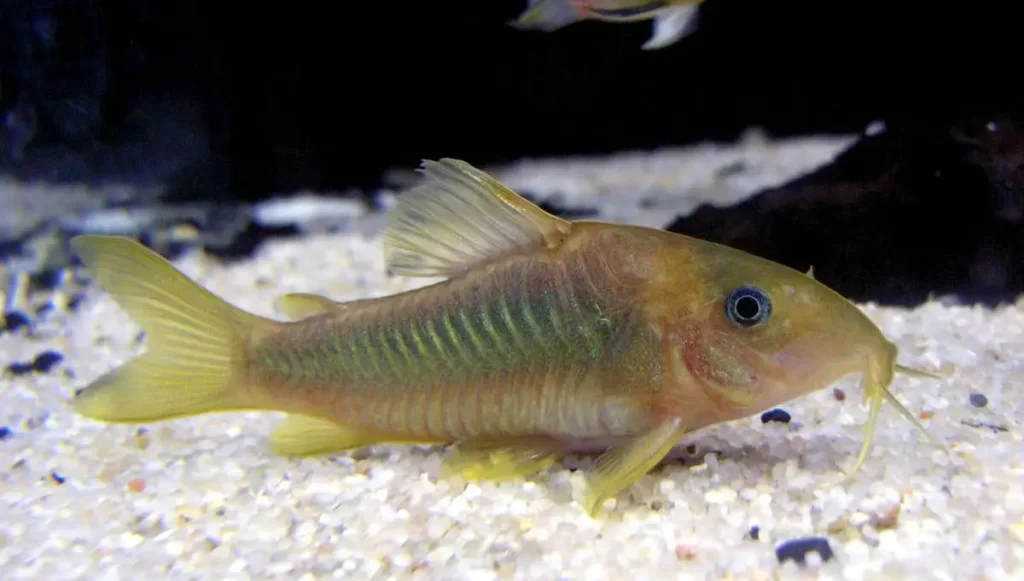
Corydoras catfish are friendly fish that like to hang out at the bottom of the tank. They get along well with live-bearing fish and can help keep the tank clean. In addition, they like to search for scraps of food and leftover bits, which makes them great little helpers.
2. Tetras

Tetras are colorful and active fish that love to swim around in groups. They’re friendly and get along well with livebearers, making them great tank mates. You can find tetras in all sorts of pretty colors and patterns, which makes them a fun and colorful addition to your aquarium.
3. Rasboras
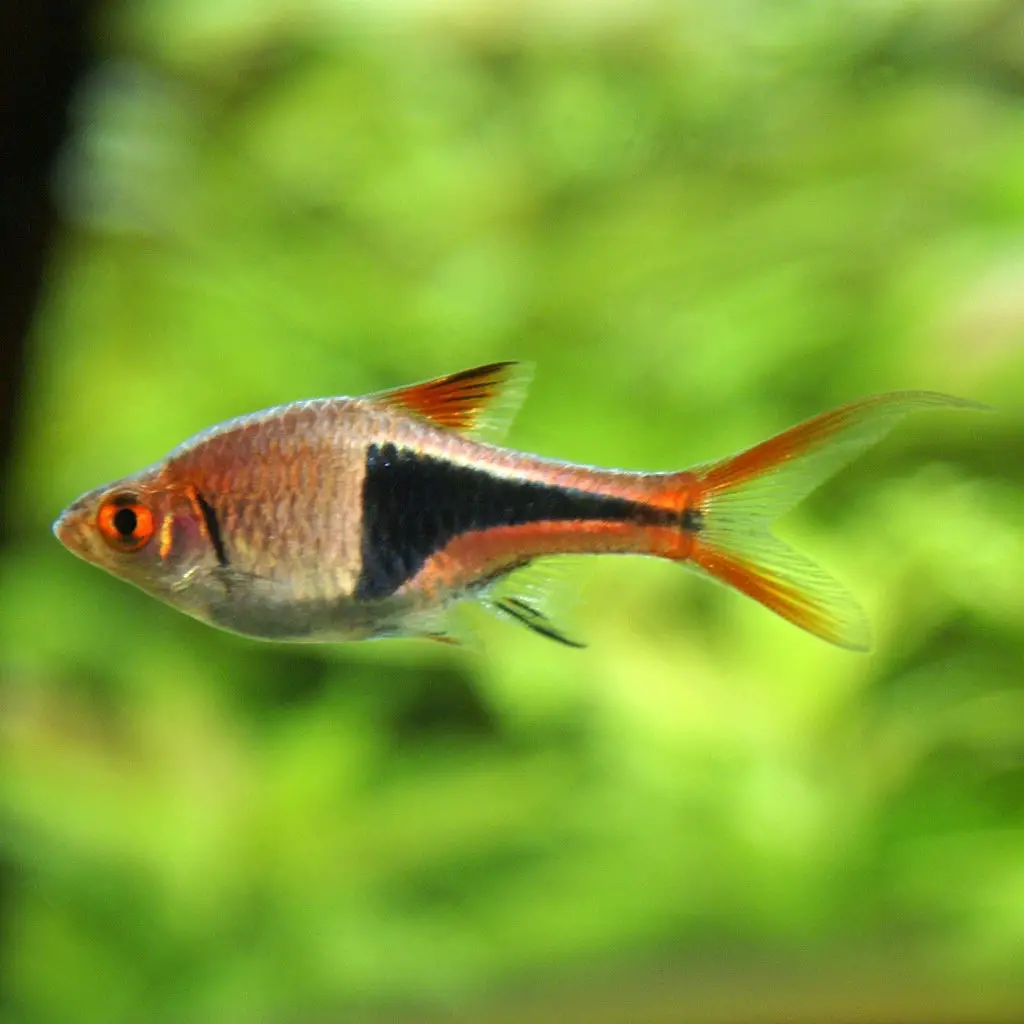
Rasboras are like the friendly neighbors of the aquarium world. They get along great with livebearers and are always up for a good time in school. Also, they come in all kinds of cool colors and patterns. They don’t require extra special care, so you can give them a good home and some food, and they’ll be happy as possible.
4. Danios

Danios are fun and lively little fish that love swimming in schools. They come in different colors and patterns and are great friends for livebearer fish in your aquarium. Danios are peaceful and get along well with others and livebearers, so they’re perfect for a community tank.
5. Killifish
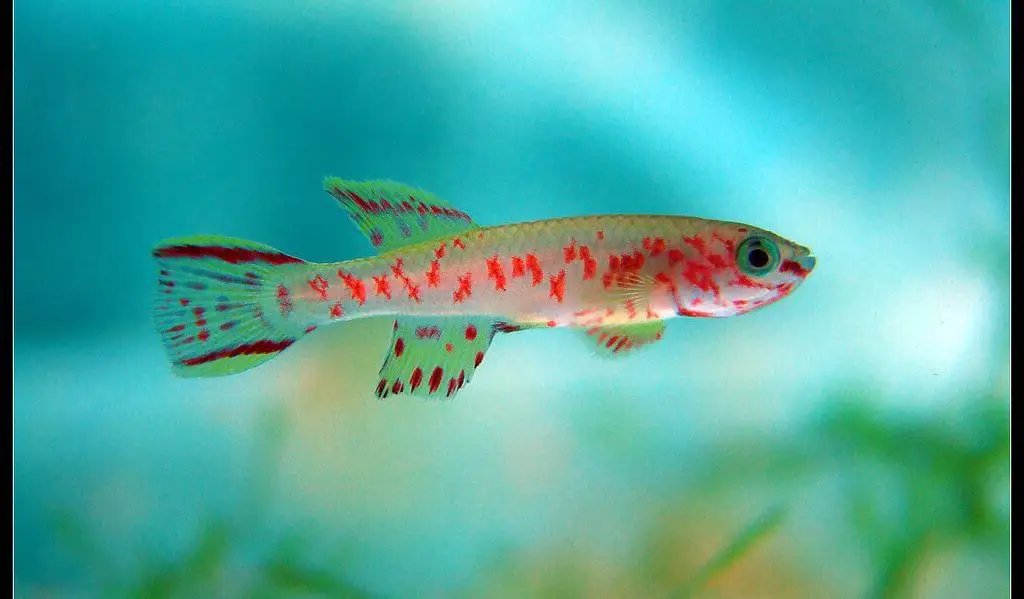
Killifish are cool and colorful fish that are perfect for your aquarium. They come in many colors and patterns, so you can find the ones you like best. They’re peaceful and easy to care for, so you can enjoy watching them swim and play in your tank.
Common Health Issues That Livebearer Fish Can Experience
It is important to know about the potential health issues that your Livebearer fish can face. Here are some common fish disorders, they are as follows:
1. The Shimmies
One common issue that livebearer fish can face is “The Shimmies,” which causes them to shake or shiver uncontrollably. If you observe this behavior in your fish, it’s important to identify the underlying cause and provide appropriate care. Poor water quality, stress, or lack of nutrients can cause it. This disease is often treatable with proper care and attention.
2. Wasting Disease
Have you ever noticed that your livebearer fish seem to be losing weight rapidly, even though they’re still eating normally? If so, they might be experiencing a condition called Wasting Disease.
If you suspect your fish might have Wasting Disease, it’s important to act fast and take steps to identify the underlying cause. It’s not something you want your fish to experience, as it can lead to severe health issues and even death if left untreated.
3. Body Fungus
Fungal infections are common for livebearer fish, and various factors can cause them. Poor water quality is a common reason behind this body fungus disease.
Fungal infection can cause their skin or fins to develop white or gray fuzzy patches. These infections can quickly spread throughout the tank, so it’s important to take action as soon as you notice any signs of Body Fungus.
4. Swim Bladder Disorder
Livebearer fish can also develop swim bladder disorders, which can cause them to float to the top upside-down or sink to the bottom of the tank.
Swim Bladder Disorder can have a variety of causes, including bacterial infections, parasitic infestations, or a lack of proper nutrition. Therefore, you should observe your fish closely and look for signs of imbalance or difficulty swimming.
How Long Do Livebearer Fish Live?
The lifespan of live-bearing fish can vary based on the species, their environment, and how well they’re cared for. On average, most live-bearing fish live for about 2 to 5 years. But if you give them proper care, some species, like guppies and mollies, can live for 5 to 7 years or even longer.
So, what helps these fish live longer? It’s all about keeping them happy and healthy. Ensuring the right water quality is as important as giving them a balanced diet and a comfortable and stress-free environment.
Keep an eye on them, make sure they have enough space in the tank, and if any health issues pop up, take care of them right away. Doing these things will help your livebearer fish live their best lives.
Are Livebearers Hardy Fish?
Yes, livebearers are generally considered hardy fish. People who keep aquariums, especially beginners, often choose livebearers because they’re relatively easy to care for and can adapt to different water conditions. They can better tolerate temperature, pH, and water quality changes than other fish.
But remember, even though livebearers are considered tough, they still need proper care and the right environment to stay healthy.
It is essential to keep their water clean, provide them with good food, and maintain the aquarium well. Therefore, it is important to regularly check the water quality and take care of any issues.
Also, remember that while livebearers are generally hardy, each fish is unique. For example, some may be more sensitive to certain conditions or have specific health concerns.
It’s a good idea to research the specific requirements and potential challenges associated with the particular type of livebearers you want to keep.
How Can I Mate The Live-bearing Fish? (Breeding Livebearers)
Breeding livebearer fish is easy and doesn’t need much special care. Here’s a concise and informative step-by-step guide to help you successfully mate these aquatic marvels:
Step 1: Gender Identification
Distinguishing between male and female live-bearing fish is crucial. Males are typically smaller and more colorful than females. This visual distinction helps you maintain the right gender ratio in your tank for successful breeding.
Step 2: Maintain the Right Ratio
To ensure a harmonious breeding environment, maintain a ratio of at least two female fish for every male in your tank. This balanced gender distribution reduces stress and increases breeding success.
Step 3: Maintain Water Parameters
Maintain optimal water conditions, including temperature, pH, and water quality. Live-bearing fish typically thrive in water temperatures between 72-78°F (22-26°C) and a pH range of 6.5 – 8.0. Ensure that water parameters are stable and well-suited for breeding.
Step 4: Observation
Observe your live-bearing fish closely. Look for mating behavior, which may involve males turning upside down, wriggling, or chasing females. These behaviors indicate successful mating attempts.
Step 5: Provide Privacy
Livebearer fish breed more comfortably when they have privacy. Introduce plants or rocks into your tank to create hiding places for pregnant females to give birth. This also ensures the safety of the fry.
Step 6: Care for the Fry
After successful breeding, you’ll soon have a new generation of baby fry. To nurture their development, offer food options such as finely crushed flakes or newly hatched brine shrimp. Ensure that the fry is well-fed and protected from adult fish.
How Can I Spot Pregnant Livebearer Fish In My Aquarium?
Identifying pregnant Livebearer fish in your aquarium is an exciting part of fishkeeping. Understanding the signs of pregnancy allows you to create a nurturing environment for expectant mothers and their soon-to-arrive fry. Some of the key indicators of pregnancy in Livebearers are mentioned below:
1. Gravid Spot
When a female Livebearer fish is pregnant, you can easily spot a round, darker mark on her belly known as the “gravid spot.” As her pregnancy progresses, this spot becomes more prominent in size and color.
2. Gravid Patch
Certain pregnant Livebearer species may exhibit a small, swollen region on their underbelly, commonly known as a “gravid patch.”
3. Change in Body Shape
Keep an eye on the female’s body shape. When Livebearer fish are pregnant, they typically appear larger and more rounded than their usual size.
4. Behavioral Changes
Pay attention to changes in the female’s behavior. Pregnant Livebearers might become more territorial or aggressive as they get ready to give birth.
When you see these signs, it’s a good idea to move the pregnant female to a separate tank so she can give birth in a safe and stress-free environment.
How Do You Raise Fry Livebearers In An Aquarium?
When Livebearer fish breed, they can have lots of babies at once. But adult fish might eat the little fry if hungry, so we must ensure they have a safe hiding place.
One way to keep the fry safe is by adding many plants to the aquarium. Some plants can float on the water’s surface, providing great hiding places for the little fish.
You can also buy special breeding nets that hang in the aquarium and keep the fry separate from the adult fish.
So, to help the fry grow big and strong, you can feed them special baby fish food, like flakes or brine shrimp. Then, you can start giving them bigger food like pellets or even small vegetables as they grow.
Frequently Asked Questions(FAQs)
Here are some of the frequently asked questions related to live-bearing fish, they are as follows:
Can Livebearer Fish Be Kept With Other Types Of Fish?
Yes, livebearer fish can be kept with other types of fish if they are compatible regarding water parameters, temperament, and size. In addition, many livebearer species, such as Guppies, Mollies, and Platies, are peaceful community fish that can coexist with other peaceful species.
What Is The Largest Livebearer Tropical Fish?
The largest livebearer tropical fish is the Molly, which can grow up to 4-5 inches (10-12 cm) in length. Mollies are popular aquarium fish in various colors and patterns, including black, silver, orange, and yellow. They are hardy fish that are relatively easy to care for and breed.
What Is The Easiest Livebearer To Breed?
Several Livebearer fish species are easy to breed. Among them, the Guppy is a great choice for beginner breeders because they are hardy, adaptable, and rapid breeders. To breed Guppies, you will need a male and a female. Females can give birth to up to 200 fry (baby fish) at a time, so keeping a male-to-female ratio of 1:2 or 1:3 is recommended.
Conclusion
Livebearer fish is a great choice for beginner fish keepers. They are generally peaceful and come in various colors and patterns. Livebearer fish are also a great choice for community aquariums, as they are social and can coexist peacefully with many other fish species.
When selecting livebearer fish, it’s important to consider each species’ specific needs and requirements and their compatibility with other fish in the aquarium. It is also important to provide a suitable environment with proper water conditions, filtration, and nutrition to ensure the health and well-being of your livebearer fish.
With proper research and planning, livebearer fish can make a beautiful and fascinating addition to any aquarium. They are a great way for beginner fish keepers to start the hobby and can provide many years of enjoyment and relaxation. So, consider adding some livebearer fish to your aquarium today.

